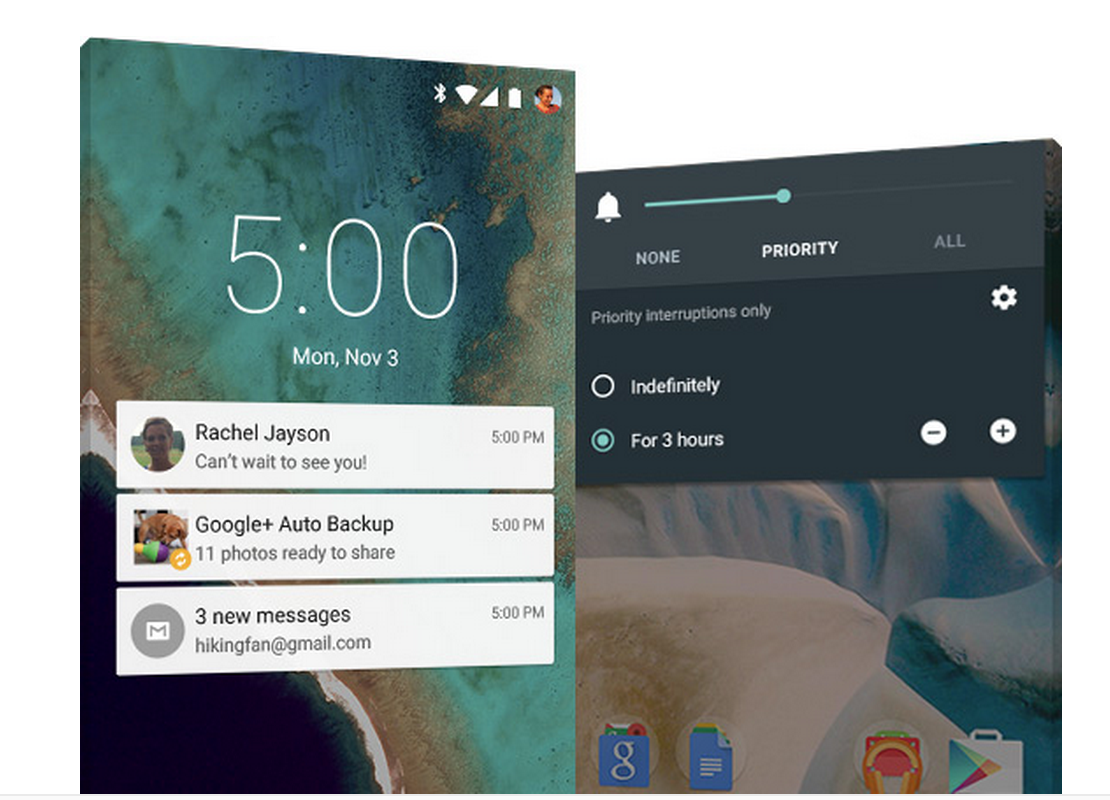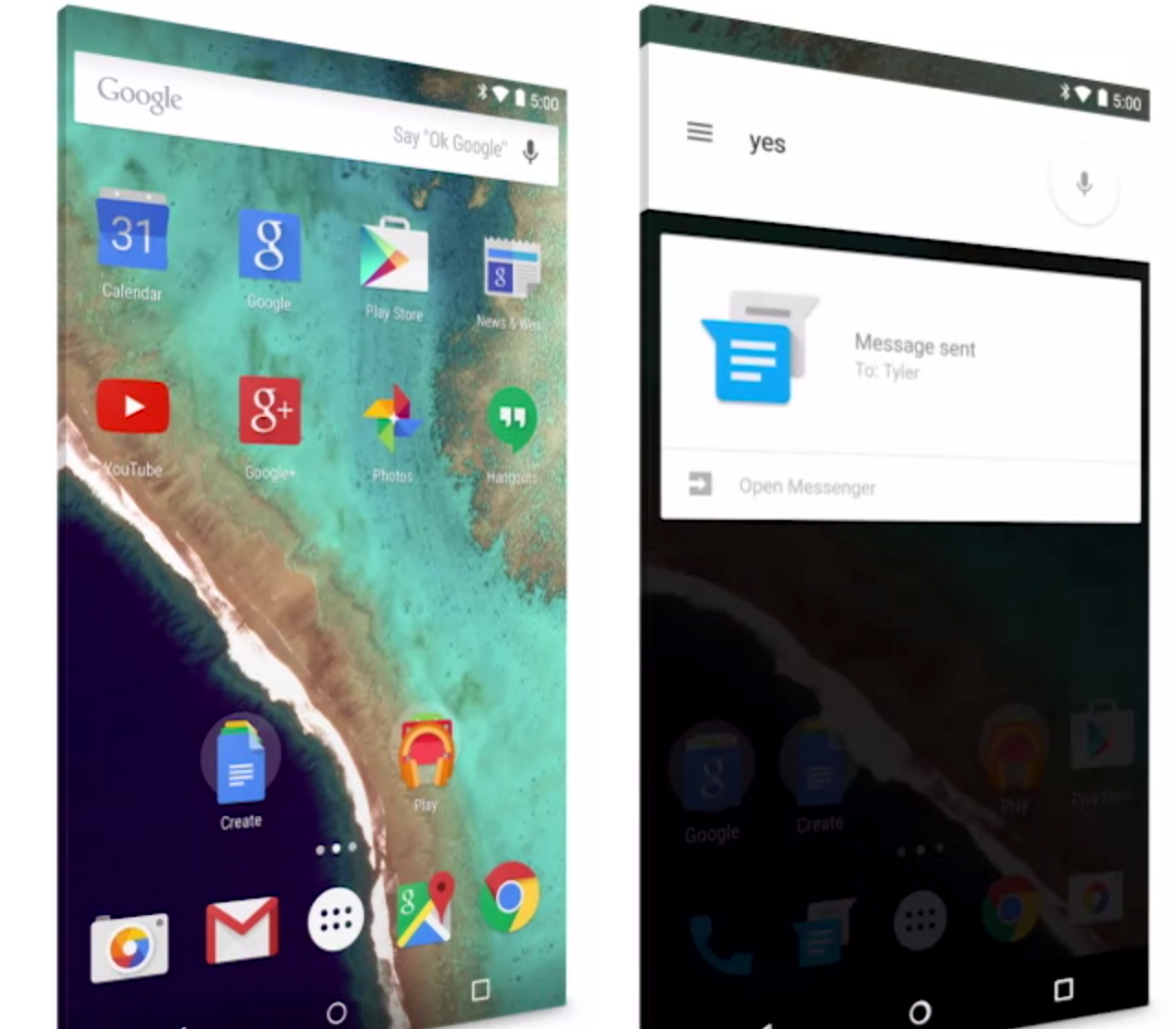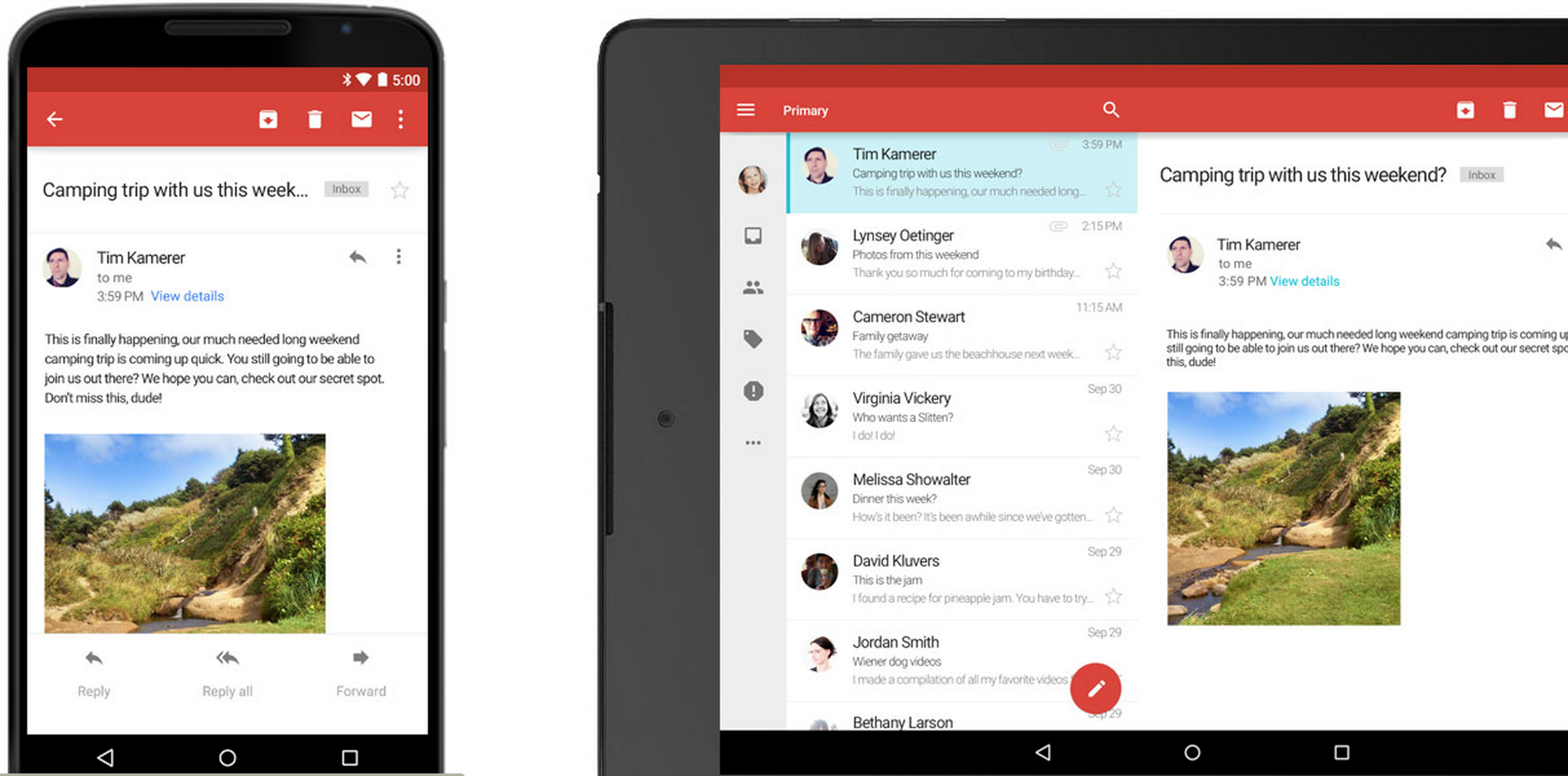
Earlier today, Google unveiled the final name of Android L: Lollipop. Also known as Android 5.0, the update comes with a number of improvements beyond what we saw on the Preview version released in June.
Aside from the biggest redesign since 2011’s Ice Cream Sandwich, Android 5.0 comes with a host of new user-facing benefits that we hadn’t heard about, or only knew about in passing.
Two main user-facing features will be immensely appreciated: more consistent performance; and improved battery life.
The first is thanks to a new Android Runtime that offers up to four times the performance over the same app running Dalvik (with the right optimizations). Android users in general will notice smoother animations throughout the OS running at a consistent 60fps.
Battery life improvements are courtesy of Project Volta, and per-app optimizations that use fewer background processes. While we haven’t seen how existing devices will respond to a Lollipop upgrade, Nexus 5 users on the Developer Preview were claiming decent battery gains on even the early software.

1) Better Notification control
While Android has arguably been the king of notifications for some time, Lollipop expands its repertoire with extensive customizations.
Don’t want to be disturbed by a certain app, or a certain person, during dinner? You can set your phone to ignore specific notifications at predetermined times, or while running full-screen apps like games or video players.
And if you prioritize Twitter mentions or emails from your mom over press releases from wineries, it’s easy to ensure they rise to the top of the list, every time.
The lock screen is also going to see a lot more usage now, as notifications like text messages and supported third-party apps can be actioned: reply to messages or Tweets without opening the app.
2) Low-latency audio apps are finally here
For years, Android has lacked the APIs necessary to support low-latency audio input for musicians and DJs producing music. As a result, iOS has enjoyed a monopoly on such app development, keeping certain creative users away from the platform.
With Android 5.0, low-latency audio support is available on certain hardware, and USB Audio devices, like microphones and mixers, can be connected to Android phones or tablets for a centralized hub.
3) Camera software finally catches up to the hardware
Android devices have been shipping with amazing cameras for a long time, but somehow iOS and Windows Phone have had the edge in controlling the user experience. OEMs like HTC and Samsung have built their own extensive frameworks on top of Android itself, but in Lollipop Google is shipping hardware-level controls “for the sensor, lens, and flash per individual frame.”
What does this mean? Third-party developers will be able to control shutter speed, ISO, focus and more without resorting to reverse-engineered hacks or workarounds. All phones, as long as the hardware supports it, will have access to these granular controls.
Android 5.0 also supports native RAW capture, something previously only offered by certain OEMs like OnePlus.
4) Set up a new device with an old device, in one tap
Setting up a new Android device is annoying and time-consuming. Android 5.0 offers up a fine solution called Tap & Go to fix this problem.
Merely tap two Android 5.0-running devices together and, over NFC, the synchronization process gets to work transferring files, apps, contacts and more.
Lollipop also automatically downloads apps from an old device to a new one through Google’s cloud infrastructure, avoiding the need to start from scratch (even if the old phone is broken or sold). While this feature has been in place for some time, it’s not that reliable, so here’s hoping Google’s shored up its infrastructure.

5) Touchless Controls, Android style
The Moto X is the only device officially capable of supporting “OK Google” when the screen is off.
This is changing with Android 5.0 on devices with the necessary hardware. Launching on the Nexus 6 and Nexus 9, but coming to others in the future, users will be able to launch Google Now from across the room.

6) A native 64-bit experience
This one won’t affect people for a while, but customers buying the Nexus 9, which sports NVIDIA’s 64-bit Tegra K1 SoC, will have access to native 64-bit apps from Google, like Gmail, Chrome, Play Music and more.
Like on iOS, 64-bit apps won’t automatically run faster, but the potential is there for desktop-like experiences down the road.
And it sets up the future of Android.
7) Multiple users, same phone
One of Lollipop’s coolest features is multiple users on the same phone. Google describes it thusly:
“Multiple users for phones. If you forget your phone, you still can call any of your friends (or access any of your messages, photos etc.) by simply logging into another Android phone running Lollipop. Also perfect for families who want to share a phone, but not their stuff.”
Super handy in emergency situations where you need to make a phone call or send a text from your number without having your phone handy.
Lollipop also sports a guest mode so local users can see just what you want them to.
—
Android 5.0 will begin rolling out to existing devices in early November, but an updated preview will be available on October 17th alongside the new Lollipop SDK for developers.
[source]Google[/source]
MobileSyrup may earn a commission from purchases made via our links, which helps fund the journalism we provide free on our website. These links do not influence our editorial content. Support us here.


